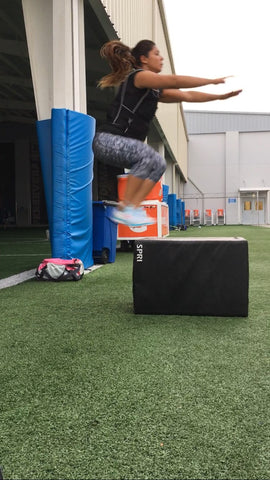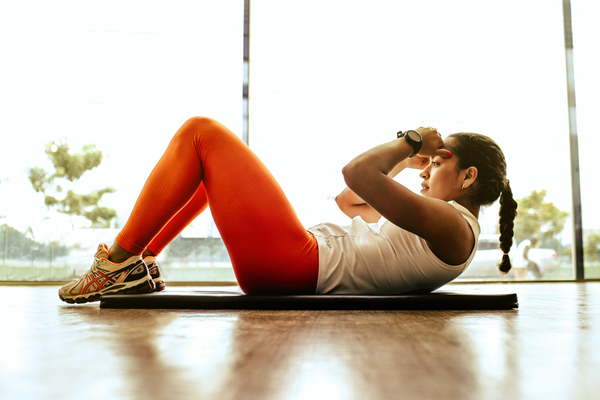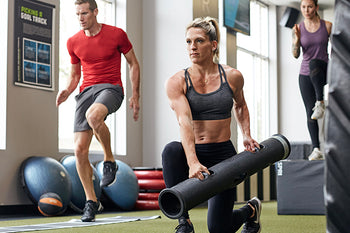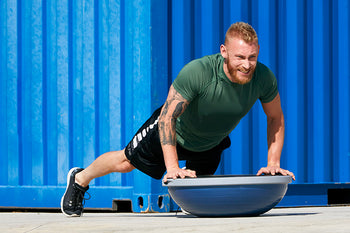Power & Pylos for a Complete Workout

by: Elliott Walters – IMG Academy Sports Performance Specialist
Power and Plyometrics are essential for the enhancement of both athletic and overall fitness performance. With advances in conditioning techniques and training programs, individuals are jumping higher, running faster, and becoming more explosive than ever. Training for power, and incorporating plyometrics into your conditioning, is sure to produce results never thought possible.
This article is intended to define the importance of power and plyometric training, how each can complement one another, and how best to incorporate them into your physical conditioning program.
Power
Power is the result of Force x Velocity, with the highest power outputs being produced by training with around 30% of your one rep max (i.e. 30% of the weight you can lift one time). Simply put, power refers to an individual’s ability to exert a maximal amount of force in the shortest possible period time. So, this is usually going to be a relatively light load (weight), moving at a very high velocity (speed). This can be achieved with lower body movements; such as squats, or upper body movements; such as the bench press.
High levels of power are so important that most coaches and conditioning specialists believe power is one of the most important factors in determining athletic success. If a person increases their power, they will be able to run faster, change direction quicker, and jump higher! Not only have increases in power output been shown to increase athletic performance, it can also improve overall human performance./p>
So you ask; how do you increase power? Simply get stronger, and get faster! We accomplish this at IMG Academy by training in high intensity zones, which in some cases may be as high as 90% of 1 rep max to increase absolute strength. However, it is important to note that performing with such a high weight load should never be executed until a solid base foundation of strength has first been laid down! As your strength levels increase and your foundation becomes more solid, set long term goals such as squatting two times your body weight. Then, as your strength increases begin incorporating plyometric training and sprint activates to improve your speed!
Plyometrics
The actual term plyometrics was first coined in 1975 by Fred Wilt, one of Americas’ top Track and Field coaches, and since then plyometric exercises has exploded into the fitness and conditioning world. Such exercises range from body-weight jumping activities, to med-ball throws, to extended bounds down a track. We at IMG realize that plyometric exercises are a very valuable training tool for the development of explosive strength and power for a wide variety of athletic and personal performance applications.
Plyometrics is defined as exercises that enable a muscle to reach maximum strength in as short a period of time as possible. Plyometric exercises merge the physical qualities of speed and strength to provide even the most highly skilled athletes with the capability to run faster and jump higher. When a well-designed plyometric program is integrated with a strong strength training program, the power development benefits are often time nothing short of outstanding! I as a coach, like to break Plyometrics into four categories: First into In-Place Jumps (Jump Rope, Squat Jumps, & Tuck Jumps), second Short Bounds (Hurdle Jumps, Long Jump), third Extended Bounds (Same as short bounds, just longer distances), and finally Depth Jumps (double leg & single leg). These categories go from low intensity (category 1) exercises to high intensity (category 4) exercises. It is very important to keep exercise progression top of mind by including Category 1 jumps into the general prep/strength training phase to help build the foundation for my athletes, then as strength and technique abilities increase progress up to Category 4 exercises.
Power & Plyometrics
Those desiring to display large amounts of force in relatively short periods may greatly benefit from incorporating a combination of power training and plyometrics into their program. In order for the athlete or fitness enthusiast to receive the most benefit from this type of training, it’s important to schedule the power/plyometric movements into the earlier part of the workout. This helps the participant to perform these highly technical movements when they are the “fresh” and capable of maintaining proper form and body alignment.
As we have already mentioned, one of the primary goals of using a combination of power and plyometric training, is to produce as much force as possible in the shortest period of time. It is important to keep in mind that the athlete will more likely perform better in a non-fatigued state, verses a more fatigues state in which he/she will be less able to apply maximal force, subsequently falling short of achieving the desired training effect. Needless to say, this may not only result in compromised performance gains but also potentially increase the risk for injury. As a coach I generally recommend incorporating most explosive power/plyometric training during and/or immediately following the warm-up. I like to use different variations of Med-ball throws (forward, backwards, & up), Jumps (hurdle Jumps, box jumps, & squat jumps), and Sprints. Perform between 2-5 reps and select 2-4 different exercises; with the amount of sets dependent upon the total volume desired to achieve in the training session, or within an entire 4-week block of training. It is important to keep in mind that these movements, despite being relatively low intensity (in terms of the weight being lifted) can be extremely taxing on the tendons, joints, ligaments, and central nervous system (CNS). Taking this into account, coupled with the fact that each repetition must be performed explosively and with great technique, it is recommended to perform a minimum of 12, and maximum of 40 individual explosive repetitions per training session. See below for some examples of explosive training moves that can easily and effectively incorporated into your training routine.





How to Incorporate Power Training & Plyometrics Into Your Program
Here at IMG Academy, we work toward progressing our athletes up to the level where they can perform power training and plyometrics effectively and efficiently at a high level, while all the time keeping in mind that the goal is to help the athlete get both stronger and faster in a progressive manner. In order to achieve this I suggest the following:
- Start with a general strength phase using basic exercises such as variations of the back squat, deadlift, bench press, chin-ups, and military press in order to develop the mobility, stability, and strength they need to be able to perform the primary movements effectively.
- Incorporate low level plyometrics (in-place jumps), in order to prepare the body to handle higher intensities as we progress.
- Once that block of training has been mastered progress into the max-strength block, where an approximate 1 rep max for primary exercise moves most applicable for the sport is determined. For example: basketball, exercises such as the back squat, clean, variations of clean and snatch, and military press.
- Next, progress into plyometric Level 2 activities (Short Bounds), along with more acceleration work to address the speed component of training.
- And finally, progress into the next blocks of training, emphasizing on the improvement of force production and velocity, ensuring that the development of power continues to rise.
Remember to progress from general strength work/ hypertrophy, to heavy strength development, and then finally into the power development to receive the most benefit! To some degree every athlete and fitness enthusiast may benefit from some form of power and plyometric training program. It is my hope that this information will provide better insight and assist you in the development a solid, results oriented power training and plyometric exercise program. Train hard, train well, and see the results!
Leave a comment
Comments will be approved before showing up.
Also in Blog

Training for Swimmers with Haven Shepherd






